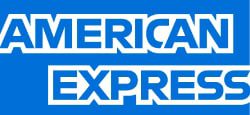Inventory Financing Loans: How it Works and Best Options
If you’re a small business owner who needs to purchase inventory for your company but may not have the funds to do so, inventory financing might be able to help. Inventory financing allows businesses to buy inventory without having the cash upfront. This type of short-term funding can also use the inventory as collateral for the loan.
On this page
Best inventory financing loans
Here are our picks for the best business inventory loans:
| Lender | Best for | Maximum amount | Minimum credit score | Time to funding |
|---|---|---|---|---|
| Mid- to low-revenue businesses | $250,000 | 660 | 1 to 3 business days | |
| High revenue businesses | $250,000 | 625 | Within hours upon approval | |
 | Short-term purchases | $250,000 | 625 | As soon as the same business day in some states |
| Bad credit | $400,000 | 500 | As soon as the same business day | |
 | Startup businesses | $150,000 | 600+ personal FICO Score | As soon as the next business day |
Learn more about how we chose our picks.
American Express Business Line of Credit: Best inventory financing for mid- to low-revenue businesses

| Term length | 6 to 24 months |
| Max. loan amount | $250,000 |
| Starting interest |
|
| Min. credit score | 660 |
| Min. time in business | 12 months |
Only $36,000 annual revenue is required
No prepayment penalties
Must have a personal guarantee
Every withdrawal from the credit line is handled as a separate installment loan
Bluevine: Best inventory financing for high revenue businesses

| Term length | 6 or 12 months |
| Max. loan amount | $250,000 |
| Starting interest | 6.20% simple interest for a 26-week repayment term |
| Min. credit score | 625 |
| Min. time in business | 24 months |
Fast application process
No monthly fees
Minimum annual revenue of $480,000
Wire transfer fee of $15 to receive fast funding
OnDeck: Best inventory financing for short-term purchases

| Term length | Up to 24 months |
| Max. loan amount | $250,000 |
| Starting interest | 35.40% |
| Min. credit score | 625 |
| Min. time in business | 1 year or more |
Wide range of loan amounts offered, starting at $5,000
Option to apply for more funding before the loan is completely paid off
Must make at least $100,000 in annual revenue
Business checking account is required
Credibly: Best inventory financing for bad credit

| Term length | 3 to 15 months |
| Max. loan amount | $400,000 |
| Starting interest | Starting from factor rate of 1.11 |
| Min. credit score | 500 |
| Min. time in business | 6+ months in business |
Quick funding that can be used for flexible purposes
Fast approval within hours
Origination fee: 2.50%
Repayments may be weekly or even daily
Fundbox: Best inventory financing for start-up businesses

| Term length | 12 weeks or 24 weeks |
| Max. loan amount | $150,000 |
| Starting interest |
|
| Min. credit score | 600 |
| Min. time in business | 3 months, but 6 months recommended |
Available to businesses in all 50 U.S. states
No early prepayment penalties
Must make at least $100,000 in annual revenue
Payment is debited each week automatically

How does inventory financing work
Inventory financing allows businesses to obtain funds needed to buy inventory. If your business is struggling to cobble together the cash needed to buy the necessary inventory or supplies you need to produce or sell your product, business inventory loans could be an option worth considering.
Inventory financing can also refer to a type of secured business loan that uses your business inventory as collateral to fund short-term business expenses, such as payroll and cash flow gaps. Businesses that require a lot of inventory, such as retailers and wholesalers, may be best suited for inventory financing.
Types of inventory financing loans
Financing for inventory loans can come as either term loans or lines of credit.
Term loans
A term loan is a lump sum of money provided upfront that is paid back in fixed daily, weekly or monthly installments. Repayment terms tend to be relatively short, so if you’re using it to purchase inventory, you’ll want to consider how quickly you can resell or use that inventory to produce the products that generate a profit.
Lines of credit
Unlike a term loan, an inventory line of credit is revolving funding that you use when needed rather than receiving a lump sum all at once. Interest is paid only on the funds you use, and once you pay off what you owe you’re eligible to withdraw the funds again. This type of flexible funding option could potentially allow you to purchase business inventory repeatedly.
Inventory as collateral for loans
Business inventory can also act as the collateral, or security, to back a small business loan. With this type of funding option, lenders would take the value of your inventory as the asset guaranteeing your loan. When you use inventory as collateral for your business loan, you may avoid having to sign a personal guarantee, which holds you personally liable in the case of default, or having to pledge other business assets, such as equipment or property.
Pros and cons of inventory financing
Before deciding if business inventory loans are the right option for you, it’s important to consider the advantages and disadvantages:
| Pros | Cons |
|---|---|
Quick funding. You’re usually able to get the money for inventory loans within a few business days. Inventory can be used as collateral. No other business or personal assets may be needed to back the loan so it’s less risky for the business owner if they should default. Lenient requirements. Newer businesses and those without excellent credit can still qualify. | May come with fees. An appraisal fee for inventory may be required along with possible origination fees and prepayment penalties. Minimum loan amount can be required. Depending on the lender, there might be a specific minimum loan amount to borrow for approval. High interest rates. Interest rates can often be higher than other financing options. |
How to apply for inventory financing
Applying for a business inventory loan is relatively simple. Here’s a few important steps to follow.
1. Compare lenders and rates.
Both online lenders and banks may offer loans to purchase inventory. Online lenders may provide much faster turnaround times for approval and funding than banks, but they may come with higher interest rates. It’s always a good idea to compare lenders and rates to find the best option that suits your business needs.
2. Evaluate time to funding and repayment terms.
If you are considering inventory financing, there’s a good chance you may need inventory quickly. Therefore, time to funding is also important. Each lender has different funding times, so be sure to check with each ahead of time. It’s also important to know the repayment terms, which differ depending on the product and the lender. For inventory financing, you can typically expect repayment terms of anywhere from three to 12 months or 36 months.
3. Gather the required documents.
When you’re getting ready to apply for an inventory financing loan with a lender, you’ll likely need the following documents as part of your application:
- Business and personal tax returns
- Bank statements
- Inventory list
- Balance sheet and profit and loss statement
- Future sales prediction
4. Apply
Once you have the required documents, applying for the loan is the final step. While your application is being reviewed, so will your finances and inventory during the due diligence period. Online lenders tend to have quick online applications, so you may know whether you qualify within minutes, while traditional banks or the SBA may take longer. Upon approval, funds can often be received within days, depending on the lender.
Alternatives to inventory financing
If a business inventory loan isn’t the right funding option for you, here are a few other options to consider:
Invoice factoring
While inventory financing provides funds to buy inventory with either a term loan or a line of credit, invoice factoring sells your invoices to a factoring company for funding. This type of financing is usually best for businesses that have a lot of invoices to sell.
Merchant cash advance
A merchant cash advance (MCA) is when a business receives cash as a lump sum by borrowing against future sales. Eligibility requirements can be more lenient, and no collateral is required, but the lender walks away with a percentage of the daily credit card sales the business makes. This borrowing method is expensive, but it’s an option to consider if your business needs money upfront in a very short timeframe.
Purchase order financing
Purchase order financing helps businesses pay for the goods or materials needed to fulfill purchase orders. A purchase order financing company pays the supplier’s costs directly, allowing you to complete the order. After orders are delivered, your customer or client pays the purchase order financing company, which will then send payment, minus its fee. Wholesalers and distributors may find this type of funding best for their businesses.
SBA 7(a) loans
Backed by the U.S. Small Business Administration, 7(a) loans can be used to cover many business expenses, such as operating costs and equipment. Similar to inventory financing, the SBA 7(a) loans can come as a term loan or a line of credit with the SBA CAPLine program.
Vendor financing
Vendor financing is when an equipment or supplies vendor works alongside a lender to provide funding to a small business. A small business could purchase materials or equipment from the vendor and then finance it with the lender working with the vendor. Vendor financing can either be as a loan or a lease. However, since vendor financing prioritizes convenience above all, be aware that it can come with higher rates.
How we chose our picks
In order to appear on our list of best inventory financing options, lenders had to meet the following criteria:
- Minimum credit scores between 500 and 640
- Loan amounts of $100,000 or greater
- Funding timelines within 3 business days or less
- Transparent starting interest rates
